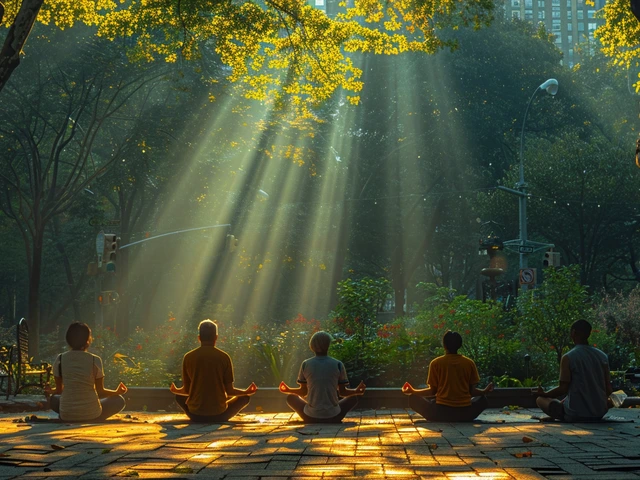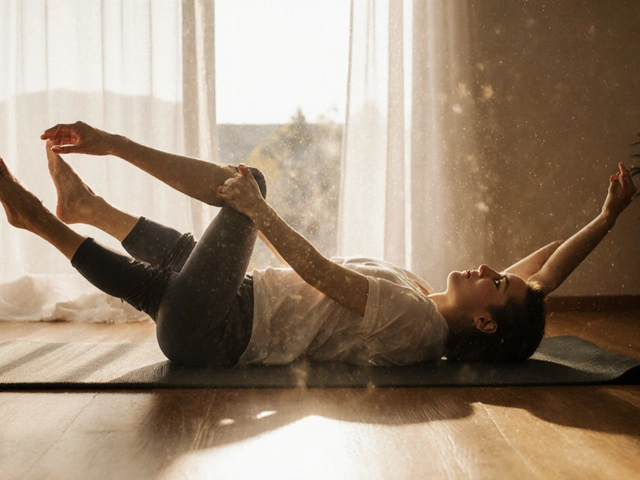Meditation: Simple Practices to Calm Your Mind
You can cut stress in five minutes with a short, practical meditation. No incense, no special cushion—just a few clear steps you can use at work, before sleep, or between sessions at the spa.
Meditation trains your attention so you react less to stress. Start small: even three minutes of focused breathing changes your state. The goal isn’t to stop thoughts, it’s to notice them without getting pulled in.
Quick 3-minute breath practice
Sit or stand comfortably. Close your eyes if that feels safe. Breathe in for four counts, hold one, breathe out for six. Repeat for three minutes. If your mind wanders, name the thought (“planning,” “worry”) and return to the breath. That simple label-and-return trick resets impulsive reactions fast.
Want something you can use lying down? Try a short body scan. Starting at your toes, notice sensations—warmth, tightness, or nothing at all—and move up slowly to your head. Spend 20–30 seconds on each area. Body scans drop tension and help you fall asleep after a busy day.
Move, don’t force: mindful movement tips
Meditation doesn’t have to be still. Walking, gentle yoga, or Feldenkrais-style slow movements count as meditation when done with attention. Try one minute of slow walking: feel your heel hit the ground, notice weight shifting, keep the breath steady. That tiny habit is perfect after a long meeting or before a massage session.
Massage and bodywork amplify meditation. A calm session—like Lomi Lomi, Amma, or warm stone therapy—can make it easier to notice subtle body sensations and lengthen the benefits of your practice. If you like retreats, check posts like “Unlocking the Power of Esalen” or “Lomi Lomi Massage” to see how bodywork and meditation pair well.
Build the habit with micro-practices. Put a 3-minute cue in your day: after brushing teeth, before lunch, or when you sit in the car. Use a phone alarm labeled “breathe.” Short, consistent practice beats rare long sessions.
Common problems and fixes: mind wandering is normal—don’t judge it. If you get sleepy, try standing or open-eyes focus on a spot. If frustration shows up, name it: “frustration,” then breathe. Expecting dramatic results fast sets you up for quitting—notice small shifts in focus and tension instead.
Sample 10-minute routine: 2 minutes breath, 4 minutes body scan, 3 minutes slow standing movement, 1 minute gratitude or intention. That combo steadies the nervous system and primes you for work, training, or a healing session.
Want more practical guides? Read articles on mindful movement and body therapies—like Feldenkrais training, Ortho-Bionomy, or Esalen retreats—to learn how meditation mixes with movement and massage to boost relaxation and resilience.

Reiki: Journey to Inner Peace and Harmony
Reiki, a Japanese form of alternative medicine, involves the use of energy healing to promote balance and well-being. Practitioners believe that channeling positive energy through touch can encourage physical, emotional, and spiritual healing. This technique, rooted in natural energy flow, aims to reduce stress and support inner peace. It's gaining popularity globally as people seek natural ways to manage health and stress. Discover how Reiki might help you find a bit of tranquility in this busy world.
Categories
- Health and Wellness (148)
- Alternative Therapies (86)
- Massage Therapy (40)
- Travel and Culture (15)
- Beauty and Skincare (9)
- Holistic Health (8)
- Health and Fitness (5)
- Spirituality (5)
- Other (2)
- Personal Development (2)
Popular Articles



